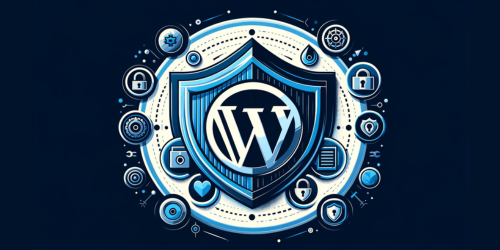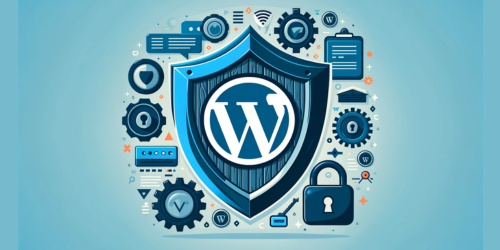In the digital age, where every second counts, the speed of your WordPress admin dashboard is not just a luxury—it’s a necessity. Imagine being on the verge of publishing a groundbreaking article or updating a product page during a flash sale, only to be held back by a sluggish dashboard. Frustrating, right? This is the reality for countless website owners and administrators. A slow-loading dashboard doesn’t just test your patience; it can also hinder your site’s overall productivity and efficiency. The repercussions? Missed opportunities, decreased user satisfaction, and a potential dip in revenue. Let’s delve into the significance of a zippy WordPress admin dashboard and shed light on the common challenges many face with lagging interfaces.
1. The Common Culprits of a Slow WordPress Admin
When it comes to a lethargic WordPress admin dashboard, several culprits often come into play. Understanding these factors is the first step towards optimizing your site for peak performance.
- Web Hosting: Not all hosting services are created equal. Shared hosting, where multiple sites vie for server resources, can significantly slow down your WordPress admin. It’s crucial to choose a reputable hosting provider that offers optimized hosting for WordPress, like SiteGround or Bluehost.
- Plugin Overload: Plugins enhance WordPress functionality, but having too many can bog down your dashboard. It’s not just the quantity but also the quality. Poorly coded plugins can be resource hogs. Tools like Plugin Performance Profiler can help identify problematic plugins.
- Outdated Core, Plugins, and Themes: Running outdated versions can lead to performance issues. Always ensure you’re using the latest versions. The WordPress Codex is a valuable resource for best practices.
- External Scripts: Loading scripts from external sources, like ads, fonts, or trackers, can slow down your admin. It’s essential to be selective about what you integrate.
- Database Clutter: Over time, your WordPress database can accumulate clutter like post revisions, trashed items, and transient options. Regularly cleaning up your database using plugins like WP-Optimize can boost speed.
In essence, a combination of factors can contribute to a slow WordPress admin. By identifying and addressing these common culprits, you can pave the way for a smoother, more efficient dashboard experience.
2. Plugin Overload: Quality Over Quantity
In the vast universe of WordPress, plugins are akin to magic wands, bestowing upon your website a myriad of functionalities. From SEO optimization to social media integration, there’s a plugin for almost everything. However, with great power comes great responsibility. The allure of plugins can lead to an overload, and here’s why that’s a concern:
- Performance Drain: Every plugin you add introduces additional code that your server and browser must process. While some are lightweight and optimized, others can be bulky and poorly coded. Hoarding too many plugins can significantly slow down both your website’s frontend and the admin dashboard. Excessive plugins are among the top reasons for WordPress sites being slow.
- Security Vulnerabilities: Deactivated plugins might seem harmless, lying dormant in your dashboard. However, they can be ticking time bombs. Even if inactive, these plugins can still have vulnerabilities that malicious entities can exploit. Plugins are the top hacking point of entry.
- Steps to Streamline:
- Audit Regularly: Periodically review and assess the plugins you have installed. Ask yourself if you genuinely need each one and if it’s serving a critical function.
- Quality Over Quantity: Instead of having multiple plugins that do similar things, opt for one that combines functionalities. Research and choose plugins that are well-rated and regularly updated.
- Use Diagnostic Tools: Plugins like Query Monitor can help you pinpoint which plugins are hogging resources.
In conclusion, while plugins are indispensable for enhancing your WordPress site, it’s vital to approach them with a discerning eye. Remember, it’s not about how many plugins you have, but how well they serve your site’s needs without compromising on speed and security.
3. The Weight of E-commerce: WooCommerce and Membership Sites
E-commerce has revolutionized the way we shop and conduct business online. Platforms like WooCommerce have made it incredibly easy to set up an online store, while membership sites allow for exclusive content access. But with these capabilities come challenges, especially in terms of website performance.
- Resource-Intensive Nature: E-commerce and membership sites inherently demand more from your server. They handle a plethora of tasks simultaneously: tracking inventory, managing user accounts, processing payments, and more. Each transaction, be it a product purchase or a member login, requires database queries and server processing. As highlighted by WooCommerce’s official documentation, the platform’s dynamic nature can be resource-intensive.
- Front-end vs. Back-end Performance: The front-end pertains to what your visitors experience: product pages loading, images displaying, and the checkout process. The back-end, on the other hand, is what you, as an admin, interact with. It includes product updates, order processing, and membership management. While users might experience swift front-end performance, the back-end can lag, especially when managing large volumes of products or members.
- Hosting Recommendations: For e-commerce and membership sites, shared hosting might not cut it. Consider dedicated or managed WordPress hosting solutions that cater specifically to online stores. Providers like Liquid Web offer WooCommerce-specific hosting, ensuring optimal performance. Additionally, Cloudways provides scalable hosting solutions ideal for growing e-commerce ventures.
In essence, while e-commerce and membership sites offer immense value, they come with their set of performance challenges. By understanding these intricacies and making informed hosting choices, you can ensure a seamless experience for both your users and yourself.
4. Plugin Conflicts: When Plugins Don’t Play Nice
The WordPress plugin repository is a treasure trove, boasting over 58,000 plugins at the last count. These plugins, developed by various authors worldwide, offer functionalities that can transform a basic site into a powerhouse. However, this diversity can also be a double-edged sword.
- A Sea of Plugins, A World of Conflicts: With such a vast array of plugins, it’s inevitable that not all will coexist harmoniously. Different developers follow different coding standards, and sometimes, these codes can clash. For instance, two plugins might try to modify the same WordPress core function, leading to a conflict.
- Real-World Plugin Drama: A classic example is the conflict between caching plugins and some page builders. Caching plugins, like W3 Total Cache, aim to speed up your site. However, when used alongside certain page builders, they might cache an unfinished version of a page, displaying a broken layout to visitors. Another common issue arises when SEO plugins overlap with social sharing plugins, both trying to generate Open Graph data for social media platforms.
- Resolving the Tug of War:
- Deactivate and Isolate: When faced with a site issue, deactivate all plugins and reactivate them one by one. This process can help pinpoint the troublemaker.
- Check Compatibility: Ensure that the plugins you’re using are compatible with your WordPress version. Often, developers update plugins to align with WordPress core updates.
- Seek Support: Leverage the WordPress Support Forums or reach out to the plugin developers directly. Often, they’re aware of conflicts and can offer solutions.
In the dynamic world of WordPress plugins, conflicts are par for the course. However, with a systematic approach and the right resources, these conflicts can be identified and resolved, ensuring your site runs smoothly.
5. Browser Habits: The Impact of Multiple Tabs
In today’s multitasking digital environment, it’s not uncommon to have a plethora of browser tabs open simultaneously. Whether it’s for research, entertainment, or sheer procrastination, these tabs have become an integral part of our browsing habits. But have you ever considered the impact of these unused tabs, especially when managing your WordPress site?
- The Silent Resource Hoggers: Each open tab, especially those with dynamic content or active sessions like your WordPress dashboard, consumes memory and CPU resources. If you have multiple tabs accessing your site’s backend, it can send repeated requests to your server. This not only strains server resources but can also slow down response times, leading to a laggy admin experience.
- Optimal Performance Through Mindful Browsing: Efficient browser usage is more than just a good habit; it’s a necessity for ensuring optimal website performance. Here are some quick tips:
- Bookmark Liberally: Instead of keeping tabs open for future reference, bookmark them.
- Use Tab Management Extensions: Tools like OneTab for Chrome can help consolidate tabs, reducing memory usage.
- Regularly Refresh: Periodically refresh your WordPress dashboard tab to ensure you’re working with the most recent data without overburdening the server.
In conclusion, while multiple tabs offer the convenience of quick access, they come with hidden costs. By adopting efficient browsing habits, you can ensure a smoother and more responsive WordPress admin experience.
6. The Challenges of Multi-Author Platforms
The beauty of WordPress lies in its collaborative nature, allowing multiple authors to contribute, edit, and publish content. However, as the adage goes, “Too many cooks spoil the broth.” When numerous authors access the WordPress admin simultaneously, it can present unique challenges.
- The Strain of Simultaneous Access: Every time an author logs into the WordPress admin, it triggers a series of server requests. These include fetching user data, loading the dashboard interface, and more. When multiple authors access the dashboard concurrently, it amplifies these requests, potentially leading to slower response times and even server timeouts.
- Efficiently Managing Multi-Author Access:
- Scheduled Access: If possible, schedule specific time slots for different authors to access the dashboard. This can distribute server load more evenly.
- Role Management: WordPress offers various user roles, from Administrators to Contributors. Assign roles judiciously, ensuring that authors have only the permissions they need. Tools like the User Role Editor can help customize these roles further.
- Opt for Front-End Editing: Consider plugins that allow authors to draft and edit content from the front end, reducing the need to access the resource-intensive admin dashboard.
In essence, while multi-author platforms amplify the power of WordPress, they come with their set of challenges. By implementing strategic solutions, you can ensure a seamless experience for all contributors while maintaining optimal site performance.
7. The Role of Hosting in Admin Speed
Behind every successful WordPress website lies a robust hosting foundation. The speed, reliability, and overall performance of your site, especially the admin dashboard, are intrinsically tied to your hosting environment. Let’s delve into the pivotal role hosting plays in admin speed.
- The Crucial Choice of Hosting: Think of your hosting provider as the engine of your car. No matter how sleek the design or advanced the features, without a powerful engine, performance will lag. Similarly, a subpar hosting provider can lead to slow server response times, frequent downtimes, and a sluggish WordPress admin experience. Moreover, shared hosting plans, where multiple sites share server resources, can often be the culprits behind a lagging dashboard.
- Is Your Hosting the Bottleneck?: Before pointing fingers, it’s essential to ascertain if hosting is indeed the issue. Tools like Pingdom and GTmetrix can provide insights into server response times. If your server takes too long to respond, it might be time to reconsider your hosting choice.
- High-Performance Hosting Recommendations:
- Managed WordPress Hosting: Providers like WP Engine and Kinsta specialize in WordPress hosting, offering optimized server configurations, automatic updates, and advanced caching mechanisms.
- Dedicated Hosting: For large websites with significant traffic, dedicated hosting, where you have an entire server to yourself, can be beneficial. Companies like Bluehost offer reliable dedicated hosting solutions.
- Cloud Hosting: Platforms like DigitalOcean and Amazon Web Services (AWS) provide scalable cloud hosting solutions, ensuring resources are available on-demand.
In conclusion, your hosting choice can make or break your WordPress admin experience. Investing in a reliable, high-performance hosting provider can pave the way for a smoother, faster, and more efficient admin dashboard.
8. Additional Tips for a Speedy WordPress Admin
While we’ve covered the major players affecting WordPress admin speed, there are always those nifty tricks and best practices that can give you that extra edge. Let’s touch upon some quick, actionable tips to keep your dashboard zipping along:
- Optimize Images: Before uploading, ensure images are compressed and optimized. Tools like Smush can help automate this process.
- Limit Post Revisions: WordPress saves every draft and revision. Limiting the number of stored revisions can reduce database clutter. The WP Revisions Control plugin is a handy tool for this.
- Use a Content Delivery Network (CDN): CDNs like Cloudflare can cache your site content in multiple locations globally, ensuring faster load times.
- Regular Maintenance and Updates: Just like a car, your website needs regular tune-ups. Schedule monthly check-ins to update plugins, themes, and the WordPress core. Also, consider a database cleanup to remove any lingering bloat.
Remember, the key to a speedy WordPress admin lies in consistent care and staying updated with best practices. A little effort can go a long way in ensuring a seamless admin experience.
9. Conclusion
Navigating the intricate maze of WordPress admin speed is no small feat. From the foundational role of hosting to the nuances of plugin management, multiple factors influence how swiftly your dashboard responds. We’ve journeyed through the significance of choosing the right hosting provider, the challenges posed by multi-author platforms, the potential pitfalls of plugin overload, and the often overlooked browser habits that can impact performance.
But beyond the technicalities and solutions, there’s an underlying theme: the user experience. A speedy admin dashboard isn’t just about convenience; it’s about ensuring that every interaction, every update, and every post published is smooth and hassle-free. In the ever-evolving world of WordPress, staying ahead of the curve is vital. So, as you move forward, prioritize your admin speed. It’s not just an operational choice; it’s a commitment to excellence, both for yourself and your audience.
10. Additional Resources
- Why is WordPress Editor So Slow?: This article delves into the reasons behind the sluggish performance of the WordPress editor. It provides insights into common issues and offers solutions to enhance the editor’s speed.
- Optimize WordPress: A comprehensive guide that walks you through the various steps and techniques to optimize your WordPress site. From caching to image optimization, this article covers it all.
- Diagnose Slow WordPress Site: If you’ve ever wondered why your WordPress site is taking too long to load, this article is for you. It provides a step-by-step approach to diagnosing the root causes of a slow WordPress site.
- How to Increase WordPress Website Speed Without Plugin: Plugins are not the only way to speed up your WordPress site. This article offers alternative methods to boost your website’s speed without relying on plugins.



